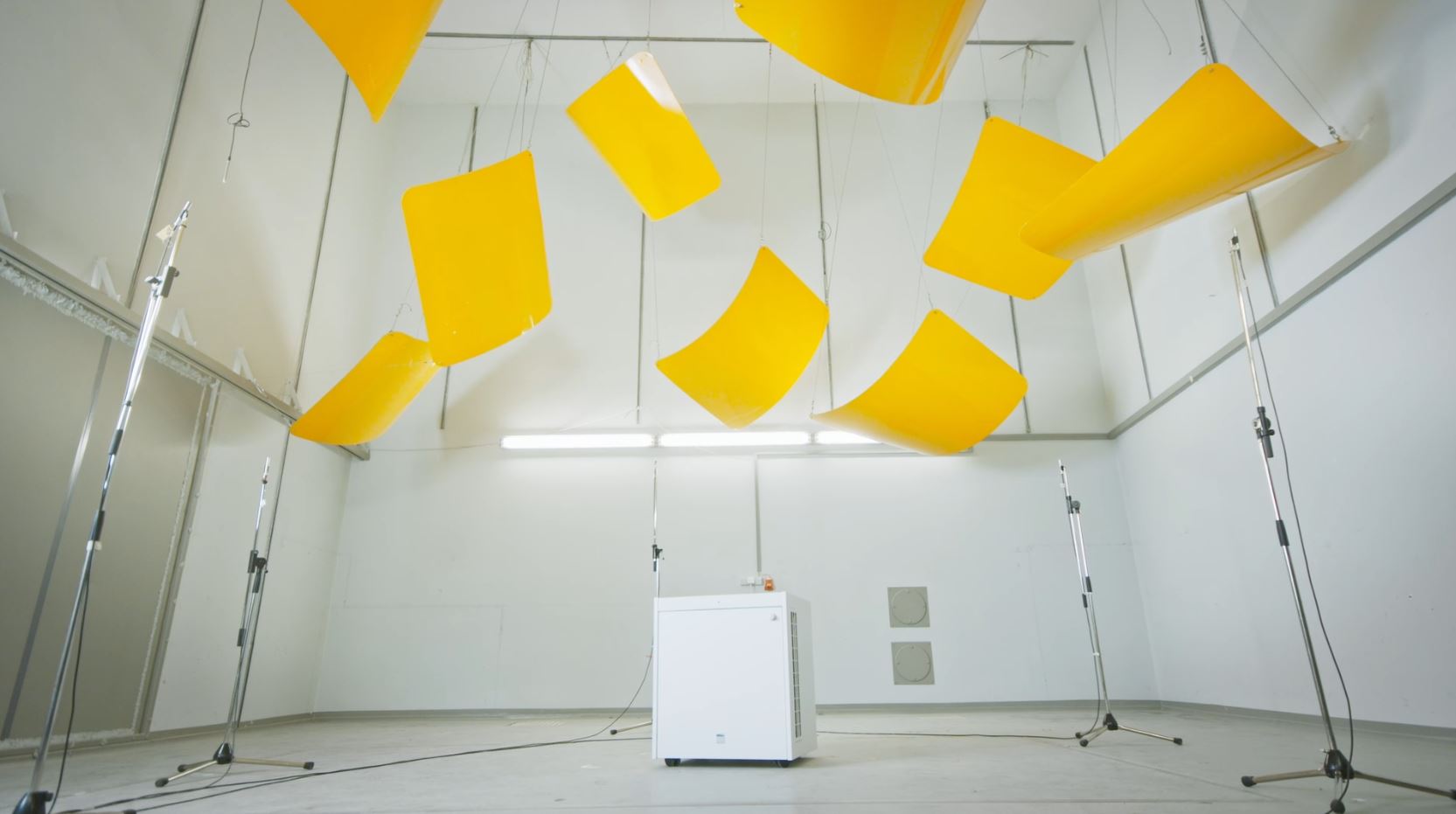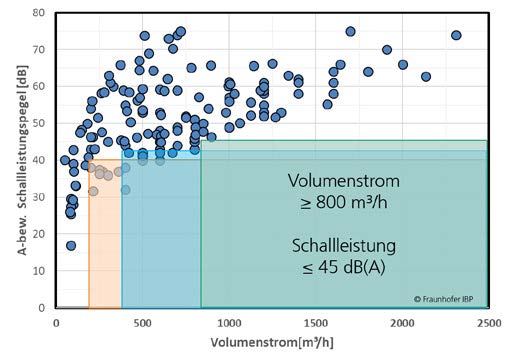The risk of becoming infected with Covid is particularly high indoors. Air purifiers are designed to rid the air of its viral load - and thus significantly help to combat the pandemic. But clean air comes at a price: the devices have to run constantly and are often quite noisy.


How loud may air purifiers be?
Air purifiers intended for use in classrooms must comply with the applicable federal and state norms and guidelines. For example: they must be capable of purifying four times the volume of air contained in the room every hour and their sound pressure level in the room may not exceed 35 dB(A) during operation. Sound pressure levels depend on the acoustic emissions of the device, the distance away from the device, the size of the room and its acoustic infrastructure. The acoustic parameter used to characterize a device is sound power, which varies depending on the volume flow.
In the State of Baden-Württemberg’s »Healthy Air Initiative« project, not only was the hygienic efficacy of the devices assessed, but the sound power from each device was also measured in compliance with standards. To predict the sound pressure level in any indoor environment, the researchers at Fraunhofer IBP developed an extended analytical method that goes beyond the usual calculation models described in VDI 3760.
How loud are air purifiers?
Our own measurements and research into the characteristics of the devices revealed that hardly any of the tested air purifiers meet acoustic requirements for use in a typical classroom with a volume of about 200 cubic meters and standard acoustic infrastructure. Noise pollution is also one of the main reasons why people decide against buying a mobile air purifier - as the research team found out for the first time in the “AC/DC” project. It is therefore highly important to minimize noise emissions from such devices.
Quiet air purifiers
One option is to operate several air purifiers simultaneously at a correspondingly lower power level. This means, however, significantly higher investment costs. The researchers in the Fraunhofer »Clean Air Acoustics« project studied the noise generated by filter-based and inactivating (UV-C based) air purifiers. They also derived measures to reduce noise levels. Result: Hybrid active/passive noise control concepts that decrease A-weighted sound power levels by up to 8 decibels. Conclusion: with its concepts for optimizing the acoustics of air purifiers, Fraunhofer IBP is making an important contribution to increasing the social acceptance of these devices.